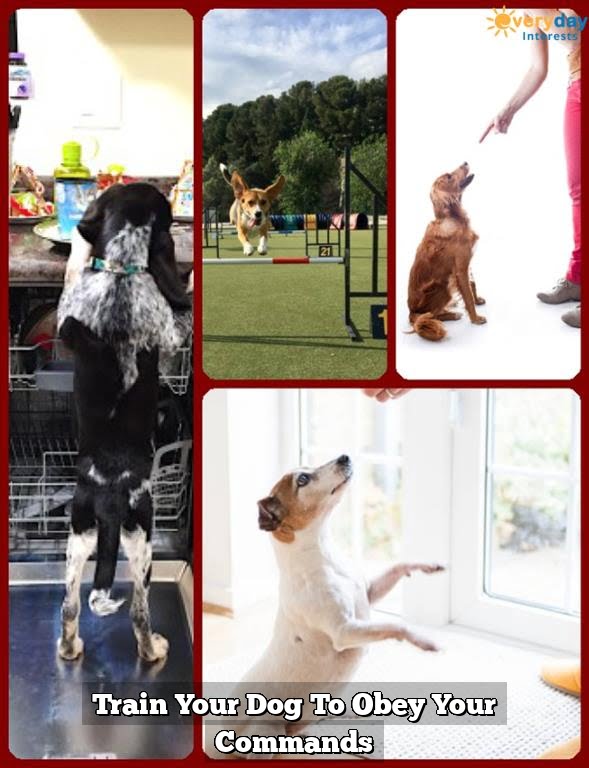Are you looking for a new way to communicate with your furry friend? In this article, we will explore how to train your dog sign language and the many benefits it can bring to your relationship. From breaking down barriers in communication to enhancing obedience and understanding, using sign language with your dog can open up a whole new world of possibilities.
Many dog owners may not realize that canines are incredibly observant creatures who rely heavily on body language and visual cues. By incorporating sign language into their training, you can tap into their natural instincts and improve your ability to effectively communicate with them. This method can be particularly useful for dogs with hearing impairments or those who struggle with verbal commands.
In the following sections, we will delve into the basics of sign language for dogs, provide a step-by-step guide on introducing simple commands, offer tips on overcoming challenges, and explore strategies for consistent training sessions. By the end of this article, you will have a thorough understanding of why training your dog using sign language is beneficial and how you can get started on this rewarding journey.
Getting Started
Sign language is not only beneficial for humans with hearing impairments, but it can also be a valuable tool for effectively communicating with dogs. Dogs are highly visual animals and they pick up on body language and hand signals more quickly than verbal commands.
By using sign language to train your dog, you can enhance your communication with them and strengthen your bond. It’s important to understand the basics of sign language and how it can be applied to effectively train your furry friend.
Understanding the Basics of Sign Language
Before diving into training your dog using sign language, it’s essential to have a basic understanding of sign language itself. Learn the common signs used in American Sign Language (ASL) or create your own simplified gestures that are easy for your dog to recognize. Keep in mind that consistency is key when using sign language, so choose simple hand movements or signals that are distinct and easy for your dog to interpret.
Applicability of Sign Language for Dogs
Sign language is particularly beneficial when training deaf dogs, as they rely solely on visual cues for communication. However, even dogs with normal hearing can benefit from learning commands through sign language.
Using hand signals alongside verbal commands can reinforce obedience and improve understanding, especially in noisy or crowded environments where verbal commands may be difficult for your dog to hear. In addition, incorporating sign language into your training routine can provide mental stimulation and enrichment for your dog, leading to a stronger connection between you and your furry companion.
Teaching the Basics
Teaching your dog sign language can be a rewarding and effective way to communicate with your pet. By using visual cues instead of verbal commands, you can improve the communication and bond between you and your dog. When starting to teach your dog sign language, it’s important to begin with the basics.
The first step in introducing simple commands using sign language is to select a few basic commands that you want to teach your dog. These can include commands such as “sit,” “stay,” “come,” and “down.” Once you have chosen the commands, it’s important to select corresponding hand signals that are distinct and easy for your dog to see and understand. For example, holding your hand up with an open palm for “stop” or pointing downwards for “lie down”.
After selecting the basic commands and their corresponding signs, it’s time to start training. Begin by using both the verbal command and the sign at the same time, allowing your dog to associate the two together. Be sure to use positive reinforcement such as treats or praise when your dog correctly responds to the sign language command.
As you continue training, gradually decrease the use of verbal commands while relying more on the sign language cues. With consistency and patience, your dog will learn to respond to the signs alone without needing verbal prompts. It’s important to remember that each dog learns at their own pace, so be patient and persistent in practicing these simple commands until they become second nature for both you and your pet.
Advanced Commands
Once your dog has mastered the basic commands using sign language, it’s time to move on to more advanced commands. These advanced commands can further enhance the communication between you and your dog, as well as their obedience and understanding.
Some examples of advanced commands that can be taught using sign language include “stay,” “roll over,” “fetch,” “high five,” and even trickier commands like “play dead” or “speak.” These commands not only serve as a means of control but also provide mental stimulation for your dog, keeping their minds sharp and engaged.
When introducing these more complex signs, it’s important to maintain consistency in your hand signals and gestures. Dogs thrive on routine and repetition, so ensuring that the signals for each command are consistent will help them understand what is expected of them. Always pair the sign with spoken cues in the beginning stages of training to reinforce the association between the sign and the action.
As with teaching basic commands, patience is key when introducing advanced signs to your dog. It may take some time for them to grasp these new concepts, so be sure to practice regularly and provide plenty of positive reinforcement when they successfully perform the desired action. Remember that every dog learns at their own pace, so don’t be discouraged if progress seems slow at first.
| Advanced Sign | Description |
|---|---|
| Roll Over | Teach your dog to roll over on command using a hand signal |
| High Five | Show your dog how to give a high five using sign language |
| Play Dead | Train your dog to play dead upon seeing a specific gesture |
Overcoming Challenges
When training your dog using sign language, you may encounter some common obstacles and challenges that can make the process more difficult. One of the main challenges is ensuring that your dog understands and responds to the signs consistently. This requires patience and persistence, as well as a good understanding of your dog’s learning style and behavior.
Another challenge is maintaining consistency in your training approach. In order for your dog to learn sign language effectively, it is important to use the same signs for each command every time. Inconsistency can lead to confusion for your dog and hinder their progress in learning new commands or behaviors.
Additionally, some dogs may require more time and effort to adapt to sign language compared to others. It is essential to recognize that every dog is different, and therefore, it is important to tailor your training approach based on your dog’s individual needs and abilities.
| Challenge | Solution |
|---|---|
| Ensuring consistent understanding and response to signs | Patience, persistence, understanding of dog’s behavior |
| Maintaining consistency in training approach | Use same signs for each command every time |
| Varying adaptation times for different dogs | Tailor training approach based on individual needs and abilities |
Incorporating Visual Cues
Training your dog using sign language can be a highly effective way to communicate with your furry friend, especially if they have hearing impairments or if you simply want to enhance your bond through a different means of communication. Incorporating physical cues and gestures can further reinforce the sign language commands, making it easier for your dog to understand and respond to your instructions.
Here are some tips on how to effectively incorporate visual cues into your dog’s sign language training:
- Consistency is key: Ensure that you consistently use the same physical cue or gesture every time you give a specific sign language command. This will help your dog associate the two forms of communication more easily.
- Use clear and distinct movements: When incorporating physical cues, make sure that your movements are clear and distinct. Avoid using confusing or overlapping gestures, as this may lead to misunderstandings.
- Pair with verbal commands: While the primary focus is on sign language, it can be helpful to pair each sign with a verbal command at first. Eventually, you can phase out the verbal commands as your dog becomes more adept at understanding the signs and associated physical cues.
In addition to incorporating physical cues, it’s important to create a positive and engaging training environment for your dog. Using treats, praise, and play as rewards can further reinforce their understanding of both the sign language commands and the accompanying visual cues. Remember that patience and persistence are key when training your dog in sign language, so celebrate even small successes along the way.
Practice Makes Perfect
Training your dog in sign language requires consistency and dedication. Here are some strategies to help you have effective training sessions:
1. Establish a routine: Dogs thrive on routine, so it’s important to establish a consistent schedule for training sessions. Whether it’s once or twice a day, stick to the same time every day for training to help your dog understand when it’s time to focus and learn.
2. Keep sessions short and focused: Dogs have shorter attention spans, so it’s best to keep training sessions short and focused. Aim for 10-15 minute sessions to prevent your dog from becoming bored or frustrated.
3. Use positive reinforcement: Rewarding your dog with treats, praise, or playtime is crucial for successful training. When your dog responds correctly to a sign language command, immediately reward them with their favorite treat or verbal praise.
4. Be patient and persistent: Learning sign language is a new experience for your dog, so patience is key. If your dog doesn’t seem to grasp a command right away, remain calm and continue practicing consistently until they understand.
5. Eliminate distractions: To ensure effective training sessions, choose a quiet and distraction-free environment where your dog can focus solely on learning sign language commands without being interrupted.
By incorporating these strategies into your training sessions, you can help your dog learn and understand sign language more effectively while enjoying the process together. Remember that consistency and patience are essential for achieving success in training your dog in sign language.
Celebrating Success
Setting Milestones
As you continue to train your dog using sign language, it’s important to set specific milestones for their progress. This could include mastering basic signs, responding consistently to commands, or even demonstrating advanced skills. By establishing these milestones, you can track your dog’s development and celebrate their achievements along the way.
Positive Reinforcement
One of the most effective ways to recognize and reward your dog’s progress in sign language training is through positive reinforcement. This can include verbal praise, treats, or even playtime as a form of encouragement. When your dog successfully responds to a sign language command, immediately follow it with positive reinforcement to reinforce their behavior.
Consistency in Rewards
Consistency is key when it comes to recognizing and rewarding your dog’s progress in sign language training. Make sure that the rewards are given consistently each time your dog demonstrates the desired behavior. This will help them understand that their actions result in positive outcomes, encouraging them to continue learning and responding to sign language commands effectively.
By celebrating your dog’s success and consistently rewarding their progress in sign language training, you are reinforcing their understanding and motivation to learn. Remember that every dog learns at its own pace, so be patient and persistent in your training approach.
Conclusion
In conclusion, training your dog using sign language can be a rewarding and effective way to communicate with your furry friend. The benefits of using sign language to train your dog are numerous, including improved communication, increased bonding, and the ability to cater to dogs with hearing impairments. It’s important to recognize that patience and persistence are key when it comes to successfully training your dog in sign language.
As you embark on the journey of training your dog in sign language, remember that getting started with the basics is crucial. Learning the fundamentals of sign language and its applicability for dogs will lay a strong foundation for successful training. Taking the time to teach your dog simple commands step-by-step and gradually introducing more complex signs will require consistent effort, but the results will be worth it.
It’s essential to address common obstacles and training issues that may arise when using sign language to communicate with your dog. Overcoming these challenges with determination and a positive attitude will ultimately result in improved communication and understanding between you and your canine companion. By incorporating visual cues, practicing consistently, celebrating small victories, and emphasizing patience throughout the process, you can successfully train your dog in sign language and enjoy the benefits of this unique form of communication.
Frequently Asked Questions
Is It Possible to Teach a Dog Sign Language?
It is indeed possible to teach a dog sign language, especially if the dog is deaf or has hearing impairments. Dogs are very intelligent and can learn to associate specific signs with commands or actions just as they would with spoken words.
This can be especially beneficial for deaf dogs as it allows them to understand and respond to their owner’s cues without relying on auditory commands.
Is Dog Sign Language a Thing?
Dog sign language is definitely a thing, and it’s most commonly used for communicating with dogs that have hearing impairments. Just like American Sign Language (ASL) is used by people who are deaf or hard of hearing, dog sign language involves using specific gestures or hand signals to convey commands or communicate with a deaf dog.
Many pet owners have found success in using sign language to effectively train and communicate with their hearing-impaired pets.
What Signs to Teach a Deaf Dog?
When teaching signs to a deaf dog, it’s important to focus on basic commands that are essential for their safety and well-being. Some common signs to teach a deaf dog include hand signals for “sit,” “stay,” “come,” “down,” and “heel.”
Consistency, repetition, and positive reinforcement are key when training a deaf dog using sign language. It may also be helpful to work with a professional trainer or behaviorist who has experience in training deaf dogs using sign language techniques.

Welcome to the blog! I am a professional dog trainer and have been working with dogs for many years. In this blog, I will be discussing various topics related to dog training, including tips, tricks, and advice. I hope you find this information helpful and informative. Thanks for reading!





